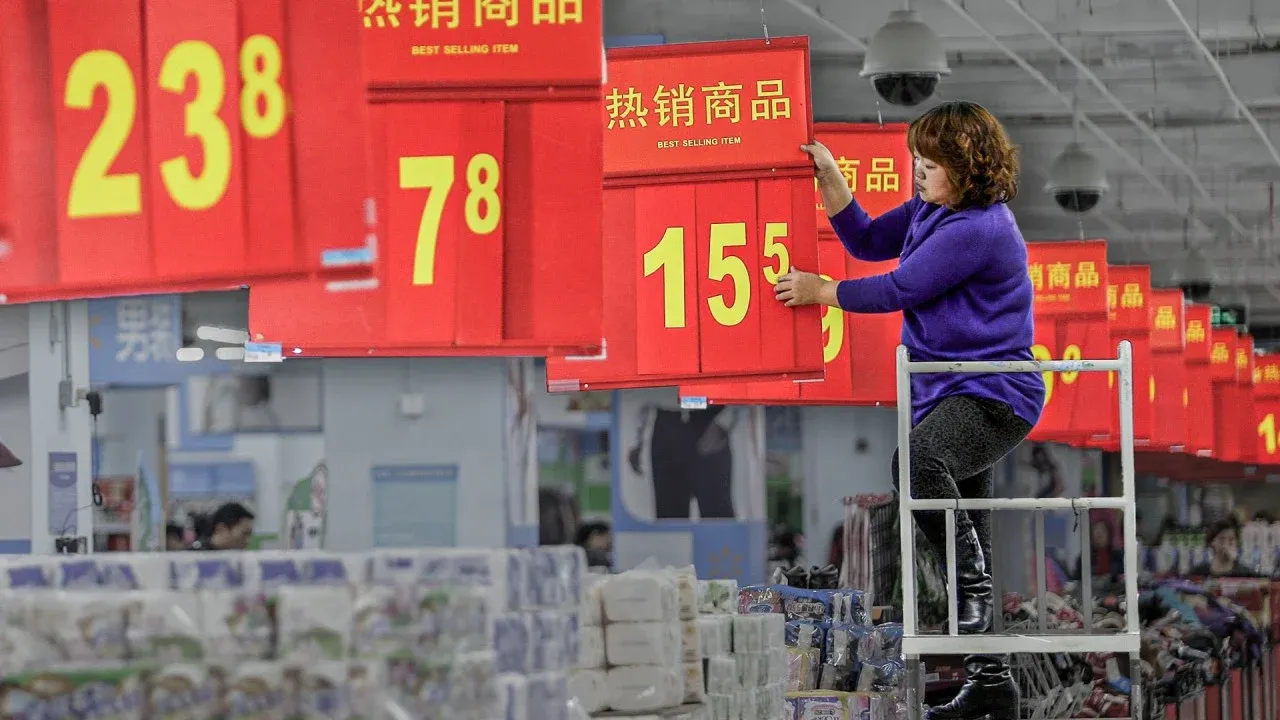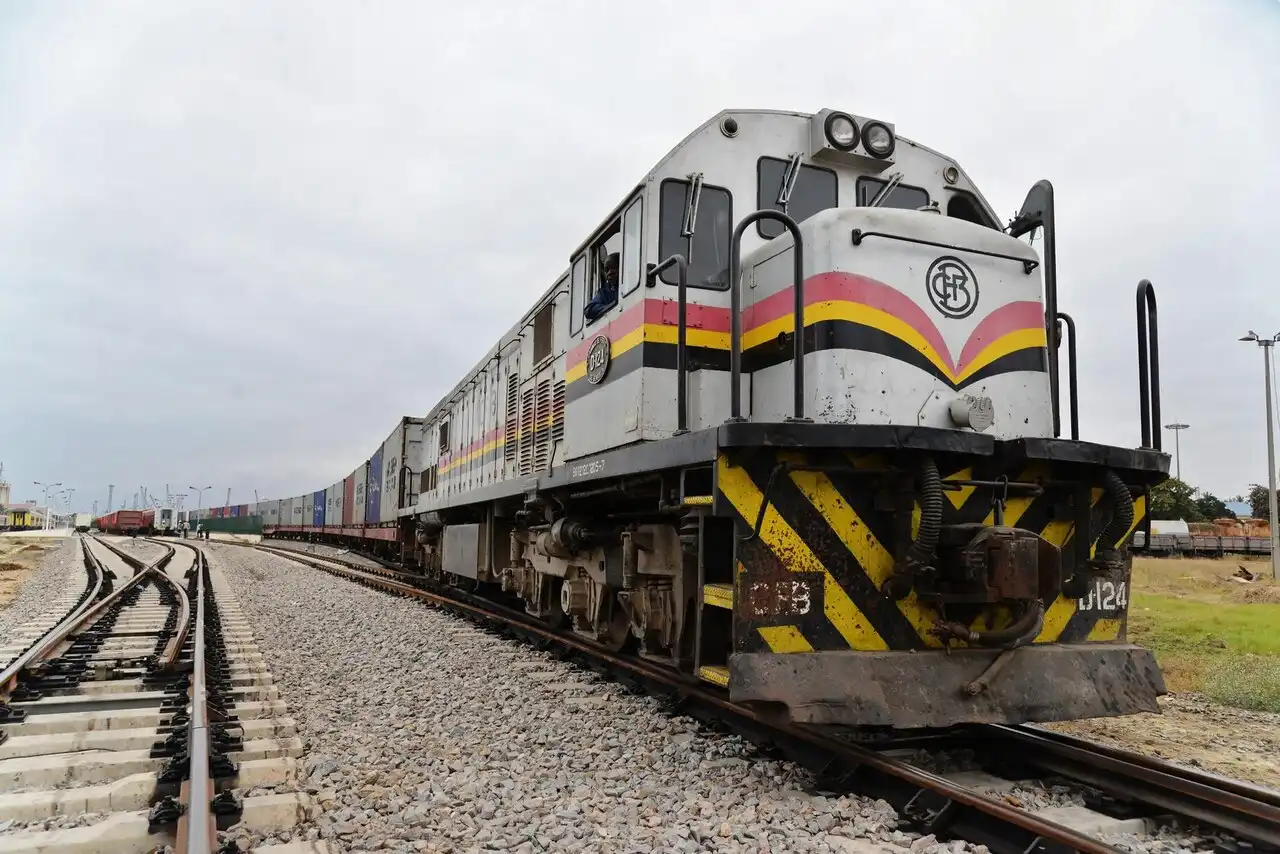China has returned to deflationary territory as the world’s second-largest economy continues to grapple with mounting challenges that threaten its growth trajectory. The official consumer price index contracted 0.4% year-on-year in August, marking a sharper decline than the 0.2% drop economists had forecast and representing the country’s slip back into deflation after remaining flat in July.
This development comes amid broader concerns about China’s economic momentum, with export growth slowing to its weakest pace in six months and persistent deflationary pressures in the manufacturing sector. The confluence of these factors has intensified scrutiny of Beijing’s economic policies and raised questions about the effectiveness of current stimulus measures in addressing structural imbalances.
Build the future you deserve. Get started with our top-tier Online courses: ACCA, HESI A2, ATI TEAS 7, HESI EXIT, NCLEX-RN, NCLEX-PN, and Financial Literacy. Let Serrari Ed guide your path to success. Enroll today.
Understanding China’s Deflationary Spiral
Core Inflation Data and Trends
The latest data from China’s National Bureau of Statistics reveals the depth of the country’s economic challenges. While the headline consumer price index fell into negative territory, the producer price index (PPI) declined 2.9% year-on-year in August, representing the 35th consecutive month of factory-gate deflation.
Core CPI, which excludes volatile food and energy prices, showed some resilience by rising 0.9% year-on-year, marking the highest reading since February 2024. However, this marginal improvement has done little to offset broader deflationary pressures that continue to weigh on corporate profits and economic sentiment.
The decline in food prices deepened to 4.3% in August compared to 2.7% in July, with pork, fresh vegetables, and fruit experiencing wider declines. Deflation in consumer durables, which serves as a better gauge of broader price pressures, deepened to 3.7% last month from 3.5% in July.
Historical Context and Comparison
According to Capital Economics estimates, the current level of deflation is more severe than what China experienced during the 2008 financial crisis. This comparison underscores the magnitude of the economic challenges facing the country and the potential long-term implications if deflationary trends persist.
China has been experiencing continuous deflation for six consecutive quarters, with prices falling consistently since late 2023. This sustained period of price declines has created a self-reinforcing cycle where consumers and businesses delay purchases in anticipation of further price reductions.
The Anti-Involution Campaign: Beijing’s Policy Response
Understanding “Involution” in the Chinese Context
Central to Beijing’s economic strategy is the anti-involution campaign, launched in July 2025 to combat what Chinese policymakers term “destructive price wars” and excessive competition. The concept of “involution,” originally a sociological term describing stagnation despite increased effort, has been adapted to describe China’s current economic malaise.
In the Chinese context, involution refers to the race-to-the-bottom competition that has characterized multiple industries, from food delivery services to manufacturing sectors. This phenomenon has led to price wars, margin compression, and ultimately, deflationary pressures that undermine corporate profitability and economic growth.
Scope and Implementation of Anti-Involution Measures
Unlike the 2015 supply-side reforms that primarily targeted state-owned enterprises in heavy industries, the current anti-involution campaign spans both traditional sectors (steel, cement, coal) and new economy growth drivers (solar panels, electric vehicles, lithium batteries).
The campaign employs market-based regulatory tools rather than direct administrative cuts. According to Goldman Sachs surveys, more than 80% of China’s steel mills have begun cutting 2025 production by 1-16% as of July, indicating the policy’s early impact on industrial planning.
Key industries targeted include:
- Solar sector: Capacity utilization has plunged to 40-50%, with over 90% of companies reporting losses
- Electric vehicles: Production capacity utilization stands at just 59%
- Steel: Average profit margins among major producers have compressed to just 3.96%
- Energy storage: Battery cell gross profit margins have fallen to 22.6%
Manufacturing Overcapacity Crisis
China’s manufacturing overcapacity has reached critical levels across multiple sectors. According to industry estimates, Chinese capacity accounted for 149% of global demand for solar panels, 126% for lithium batteries, and 105% for electric vehicles in 2024.
This overcapacity stems from the rapid manufacturing investment expansion following the 2021 property market collapse. As real estate investment declined, capital shifted toward manufacturing, creating a surge in industrial capacity that exceeded both domestic and global demand. The result has been a flood of cheap Chinese goods in international markets, triggering trade disputes and anti-dumping investigations.
Economic Indicators and Performance Metrics
GDP Growth and Structural Challenges
Despite maintaining economic growth that appears resilient on the surface, China faces significant structural headwinds. The country’s potential growth rate is estimated at 5% at most, yet manufacturing investment continues to exceed 40% of GDP, creating what economists describe as inevitable waste and mounting bad debt.
The mismatch between China’s manufacturing output (approximately 30% of global production) and domestic consumption (only 18% of global demand) has created a massive trade surplus approaching $1 trillion in 2024. This imbalance reflects deeper structural issues in China’s economy that cannot be resolved through monetary policy alone.
Consumer Behavior and Demand Weakness
Chinese consumers have been increasingly hunting for value as prices fall across the economy. The phenomenon is visible in everything from high-end Beijing hotels setting up street stalls to serve dishes to budget-conscious consumers, to the proliferation of discount programs in food delivery services.
Local governments across the country have been forced to pause consumer trade-in programs that subsidize spending on cars, household appliances, and smartphones due to rapid depletion of allocated funds. This indicates that while price-sensitive demand exists, sustainable consumption growth remains elusive.
Push boundaries, reach goals, achieve more. Whether it’s ACCA, HESI A2, ATI TEAS 7, HESI EXIT, NCLEX-RN, NCLEX-PN, or Financial Literacy, we’ve got the Online course to match your ambition. Start with Serrari Ed now.
Policy Measures and Government Response
Monetary and Fiscal Policy Tools
Chinese policymakers have intensified efforts to address deflationary pressures through multiple channels. The government has unveiled measures including subsidies for trading in old household appliances and covering portions of consumer loan interest costs.
Key policy initiatives include:
- Plans to increase the fiscal deficit ratio to 4% of GDP from 3% in 2025
- Issuance of more ultra-long-term treasury bonds
- Implementation of “moderately loose monetary policy”
- Potential 40-basis point cut in policy rates, the largest reduction since 2016
- Enhanced government spending programs targeting consumer demand
Regulatory Framework Changes
The National Development and Reform Commission and State Administration for Market Regulation jointly released a draft amendment to China’s pricing law—the first update since 1998—aimed at addressing “disorderly low-price competition.”
These regulatory changes represent a fundamental shift in how China approaches market competition, moving away from pure scale-driven growth toward quality-focused development that prioritizes profitability and sustainability over market share expansion.
Sectoral Analysis: Winners and Losers
Industries Under Pressure
The solar sector exemplifies the challenges facing overcapacity-hit industries. Despite being a strategic sector for China’s green transition, intense competition has driven capacity utilization below 50%, with industry-wide losses becoming commonplace.
Similarly, the steel industry faces mandated 10% production cuts by 2025, targeting outdated furnaces and excess capacity in regions like Hebei and Shanxi. The Ministry of Industry and Information Technology has implemented strict production quotas and environmental audits to force consolidation.
Consolidation Opportunities
The anti-involution campaign is creating clear winners among companies with scale, technology leadership, or government backing. In the electric vehicle sector, companies like BYD, NIO, and Geely Auto are positioned to benefit from industry consolidation as smaller players exit the market.
In solar manufacturing, state-backed giants like Longi Green Energy and JinkoSolar are gaining market share through vertical integration and advanced R&D capabilities. These companies have access to low-cost polysilicon and advanced N-type cell technology that provides competitive advantages as the industry consolidates.
Regional and Global Implications
Trade Relations and International Response
China’s overcapacity problem has significant implications for international trade relations. The oversupply of Chinese goods in key industries has intensified tensions with major trading partners, including the United States and European Union. Recent trade talks between Chinese and U.S. officials in Sweden occurred against the backdrop of growing concerns about Chinese manufacturing overwhelming global markets.
If the incoming Trump administration significantly increases tariffs on Chinese goods in 2025, economists predict China’s overall export growth could decline by approximately 5 percentage points. This scenario would underscore the urgency for Chinese authorities to successfully implement domestic demand stimulation measures.
Domestic Market Unification Efforts
Beijing’s campaign to unify its national market represents a crucial element in addressing overcapacity issues. Local governments’ tendency to subsidize the same industries and protect hometown firms through discriminatory procurement rules has exacerbated the problem of duplicate investments and excessive competition.
Market regulators have uncovered a growing number of cases where local protectionism undermines national market integration. Despite stepped-up enforcement efforts since 2022, officials acknowledge that local protectionism persists and continues to evolve into new forms.
Future Outlook and Market Implications
Economic Recovery Timeline
Most economists expect China’s deflationary pressures to persist well into 2026. The Producer Price Index is forecast to remain negative through 2026, while achieving the government’s 2% inflation target appears increasingly challenging in the near term.
The path toward recovery depends heavily on the effectiveness of demand-side stimulus measures and the successful implementation of supply-side consolidation efforts. Without substantial improvement in domestic consumption, China’s economy may remain trapped in a low-growth, deflationary cycle.
Investment and Market Dynamics
The anti-involution campaign is creating distinct investment opportunities and risks across different sectors. Companies with strong government backing, technological differentiation, or dominant market positions are likely to emerge stronger from the current consolidation wave.
However, investors should distinguish between policy-backed consolidation in sectors like solar and steel versus free-market dynamics in private services. The investment playbook favors firms with scale, state support, or technological advantages while avoiding those dependent solely on subsidies or low-cost competition strategies.
Long-term Structural Reforms
Addressing China’s deflation requires more than cyclical policy adjustments. Fundamental reforms to rebalance the economy toward consumption-led growth remain necessary but challenging to implement. This rebalancing requires implicit or explicit income and wealth transfers from governments and businesses to the household sector.
The success of China’s economic transition will ultimately depend on Beijing’s willingness to accept slower but more sustainable growth rates while implementing deeper structural reforms. The current anti-involution campaign represents a step in this direction, but more comprehensive policy coordination will be needed to achieve lasting rebalancing.
Conclusion
China’s return to deflation in August 2025 reflects deeper structural challenges that cannot be resolved through traditional monetary and fiscal tools alone. The government’s anti-involution campaign represents a significant policy shift toward addressing overcapacity and destructive competition, but early results suggest the path to recovery will be lengthy and complex.
The effectiveness of current policies will be measured not just in inflation statistics but in the broader success of economic rebalancing efforts. As China continues to grapple with the aftermath of its property boom and the challenges of transitioning to a consumption-led economy, the stakes for both domestic stability and global economic growth remain high.
For international observers and investors, China’s deflationary struggle offers important lessons about the risks of investment-driven growth models and the difficulty of engineering economic transitions in complex, decentralized systems. The coming months will be crucial in determining whether Beijing’s policy responses can break the deflationary cycle and restore sustainable economic momentum.
The global implications of China’s economic challenges extend far beyond its borders, affecting everything from commodity prices to trade flows and geopolitical relationships. As the world’s second-largest economy continues to navigate these headwinds, the success or failure of its policy responses will have lasting consequences for the global economic landscape.
Ready to take your career to the next level? Join our Online courses: ACCA, HESI A2, ATI TEAS 7 , HESI EXIT , NCLEX – RN and NCLEX – PN, Financial Literacy!🌟 Dive into a world of opportunities and empower yourself for success. Explore more at Serrari Ed and start your exciting journey today! ✨
Track GDP, Inflation and Central Bank rates for top African markets with Serrari’s comparator tool.
See today’s Treasury bonds and Money market funds movement across financial service providers in Kenya, using Serrari’s comparator tools.
Photo source: Google
By: Montel Kamau
Serrari Financial Analyst
10th September, 2025
Article, Financial and News Disclaimer
The Value of a Financial Advisor
While this article offers valuable insights, it is essential to recognize that personal finance can be highly complex and unique to each individual. A financial advisor provides professional expertise and personalized guidance to help you make well-informed decisions tailored to your specific circumstances and goals.
Beyond offering knowledge, a financial advisor serves as a trusted partner to help you stay disciplined, avoid common pitfalls, and remain focused on your long-term objectives. Their perspective and experience can complement your own efforts, enhancing your financial well-being and ensuring a more confident approach to managing your finances.
Disclaimer: This article is for informational purposes only and does not constitute financial advice. Readers are encouraged to consult a licensed financial advisor to obtain guidance specific to their financial situation.
Article and News Disclaimer
The information provided on www.serrarigroup.com is for general informational purposes only. While we strive to keep the information up to date and accurate, we make no representations or warranties of any kind, express or implied, about the completeness, accuracy, reliability, suitability, or availability with respect to the website or the information, products, services, or related graphics contained on the website for any purpose. Any reliance you place on such information is therefore strictly at your own risk.
www.serrarigroup.com is not responsible for any errors or omissions, or for the results obtained from the use of this information. All information on the website is provided on an as-is basis, with no guarantee of completeness, accuracy, timeliness, or of the results obtained from the use of this information, and without warranty of any kind, express or implied, including but not limited to warranties of performance, merchantability, and fitness for a particular purpose.
In no event will www.serrarigroup.com be liable to you or anyone else for any decision made or action taken in reliance on the information provided on the website or for any consequential, special, or similar damages, even if advised of the possibility of such damages.
The articles, news, and information presented on www.serrarigroup.com reflect the opinions of the respective authors and contributors and do not necessarily represent the views of the website or its management. Any views or opinions expressed are solely those of the individual authors and do not represent the website's views or opinions as a whole.
The content on www.serrarigroup.com may include links to external websites, which are provided for convenience and informational purposes only. We have no control over the nature, content, and availability of those sites. The inclusion of any links does not necessarily imply a recommendation or endorsement of the views expressed within them.
Every effort is made to keep the website up and running smoothly. However, www.serrarigroup.com takes no responsibility for, and will not be liable for, the website being temporarily unavailable due to technical issues beyond our control.
Please note that laws, regulations, and information can change rapidly, and we advise you to conduct further research and seek professional advice when necessary.
By using www.serrarigroup.com, you agree to this disclaimer and its terms. If you do not agree with this disclaimer, please do not use the website.
www.serrarigroup.com, reserves the right to update, modify, or remove any part of this disclaimer without prior notice. It is your responsibility to review this disclaimer periodically for changes.
Serrari Group 2025
















